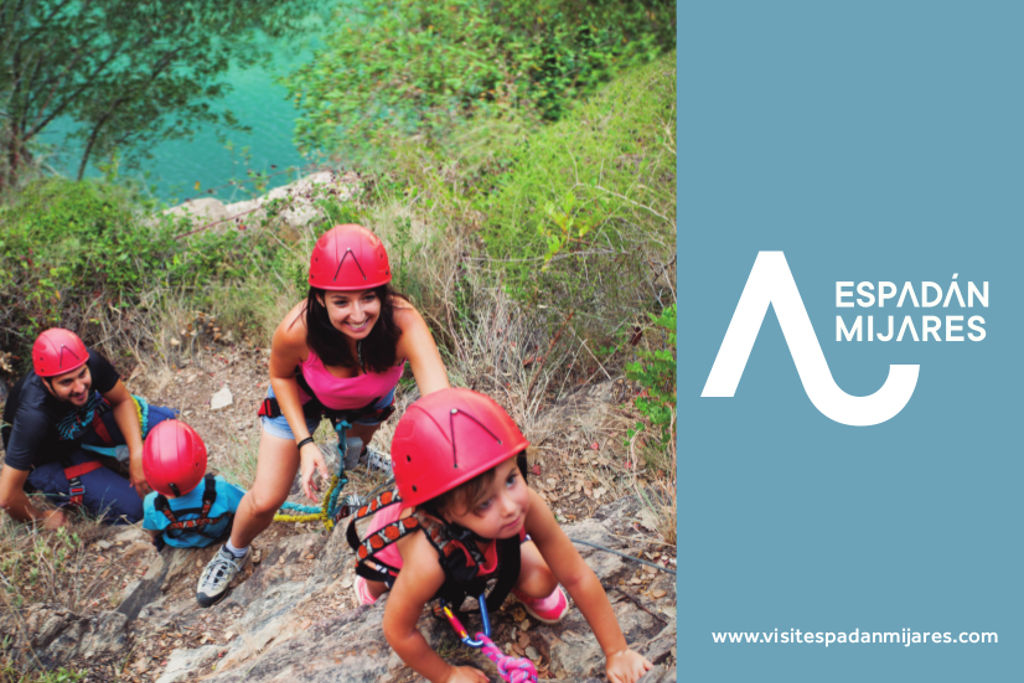Active Tourism Guide
The Espadán-Mijares Community is characterised by a great variety of options for those who wish to enjoy active tourism activities.
Its natural environment enables enthusiasts to participate in various activities, most notably hiking, cycle touring, climbing, caving, canyoning and water sports such as kayaking, paddle surfing, rafting and aquatic caving.
The Sierra de Espadán is one of the easternmost mountain ranges of the Iberian System and separates the Mijares and Palancia basins. It encompasses the regions of Alto Palancia, Alto Mijares and Plana Baja. A large portion of the mountain range is in Sierra de Espadán Natural Park, which occupies 31,180 hectares and is the second largest protected area in the Valencian Community.
The Sierra de Espadán consists of a Triassic mountain chain of great tectonic interest and a geomorphology characterised by steep ridges and gentler rolling hills, passing, in just a few kilometres, from sea level up to an altitude of 1,106 m, the summit of La Rápita. These characteristics endow the Sierra de Espadán with outstanding scenic beauty thanks to the multi-coloured nature of the geological formations, especially the range’s landscapes of siliceous rock which are notable for their reddish-pink colour in contrast to the chalky white limestone that surrounds the natural park.
The Sierra de Espadán Natural Park offers the visitor a great diversity of ecosystems: forests of maritime pine, riverside woodlands, rural areas, typical Mediterranean forests of holm oak and Aleppo pine and interesting peculiarities such as chestnut groves. The most representative ecosystem in the Sierra de Espadán Natural Park is, however, the cork oak forest, both for its uniqueness and its good state of preservation. The cork oak has the characteristic of being resistant to fire, which confers it with great ecological importance. Its rugged bark produces cork, which is then harvested, representing a significant economic resource for the villages of the mountain range.
The fauna that inhabits the park is the result of the diversity of landscapes and environments that it possesses.
Particularly prevalent are amphibians, reptiles and a great variety of birds (Bonelli’s eagle, short-toed eagle, booted eagle, goshawk, tawny owl, little owl and Eurasian eagle-owl, among many others). The mammal population includes boars, foxes, beech martens, genets and badgers. Last but not least, it is worth mentioning that the park is home to around 16 species of bat, some of which are of great importance and in serious danger of extinction.
The Serra d’Espadà Natural Park
Interpretation Centre and Management Office is located in the municipality of Eslida in the former schools building at the junction of the roads that go to Aín and Chóvar.
Visiting hours are 9:00 am - 2:00 pm, Monday to Sunday.
Tel.: +34 964 629 112 / +34 679 196 294.
E-mail: parque_espadan@gva.es

